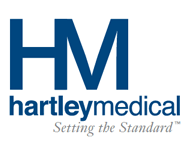 I Just returned from London, where I attended the International Neuromodulation Society Meeting. I felt compelled to be present and keep pace with developments and discussions regarding intrathecal drug deliveries. I saw many I knew and many others that, gratifyingly, knew me. It was fascinating seeing and experiencing some of these things and I was stunned to learn what professionals on the other side of the pond were engaged in. Great, notable speakers ““ among them Dr. Eric Buchser on “Mechanism of Drug Distribution in the CSF: How it May Affect Outcome;” Dr. Timothy Deer presenting “Algorithms for Patient Selection & Drug Algorithms;” and Dr. William Raffaeli on “Italian Registry of Long Term Intrathecal Ziconotide Treatment.”
I Just returned from London, where I attended the International Neuromodulation Society Meeting. I felt compelled to be present and keep pace with developments and discussions regarding intrathecal drug deliveries. I saw many I knew and many others that, gratifyingly, knew me. It was fascinating seeing and experiencing some of these things and I was stunned to learn what professionals on the other side of the pond were engaged in. Great, notable speakers ““ among them Dr. Eric Buchser on “Mechanism of Drug Distribution in the CSF: How it May Affect Outcome;” Dr. Timothy Deer presenting “Algorithms for Patient Selection & Drug Algorithms;” and Dr. William Raffaeli on “Italian Registry of Long Term Intrathecal Ziconotide Treatment.”
One of the more fascinating lectures presented a case wherein doctors had identified a section of the brain that controls hand movement. The subject for study was a young patient , a quadriplegic with a C2 spinal cord injury. The physicians surgically placed a unique fingertip sized electrode with many probes in this section, and connected it to a computer.
The computer screen had a red dot in the middle. A cursor point indicated the position of the mouse. The patient was shown to be able to operate the mouse with his brain ““ each time moving the cursor to the red dot on the screen and demonstrating the ability to “catch” the dot when it was moved to a different location. Astounding.
I later sat down with Dr. Elliot Krames and solicited his take on one of the presentations. He surprised me by stating “I disagreed with him. Told him directly at the meeting.”
I found it fascinating that many of the professional people in attendance at the meeting, when in disagreement with certain opinions and findings presented, felt free to voice their disagreement. Egos remained in check”¦and the interchange of ideas, theories and new knowledge prevailed.
Refreshing. Enlightening. And to say the least, liberating.


Leave A Comment